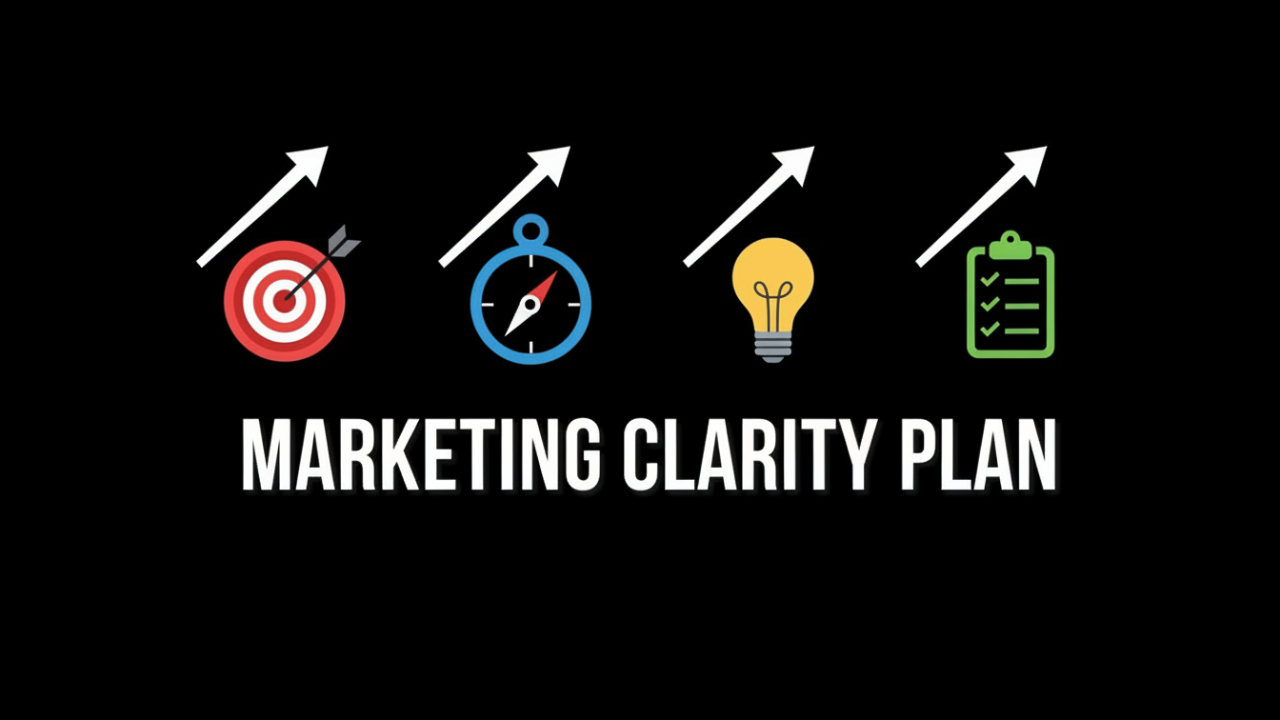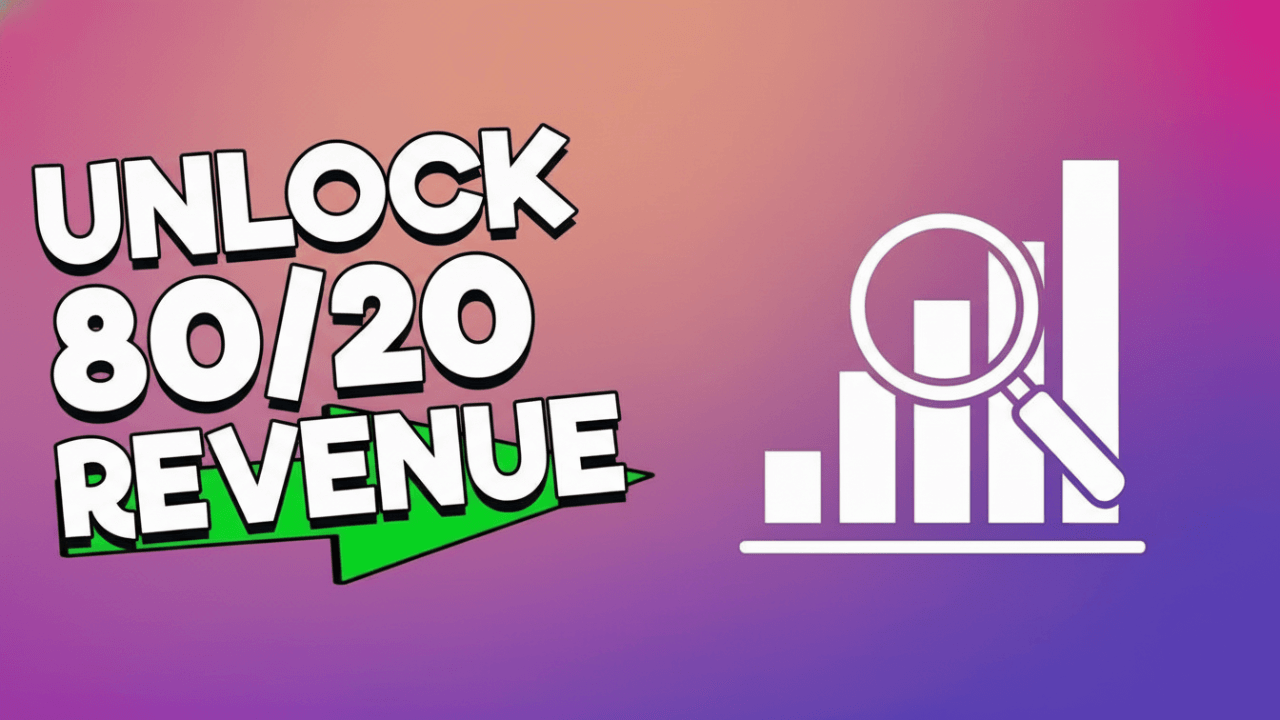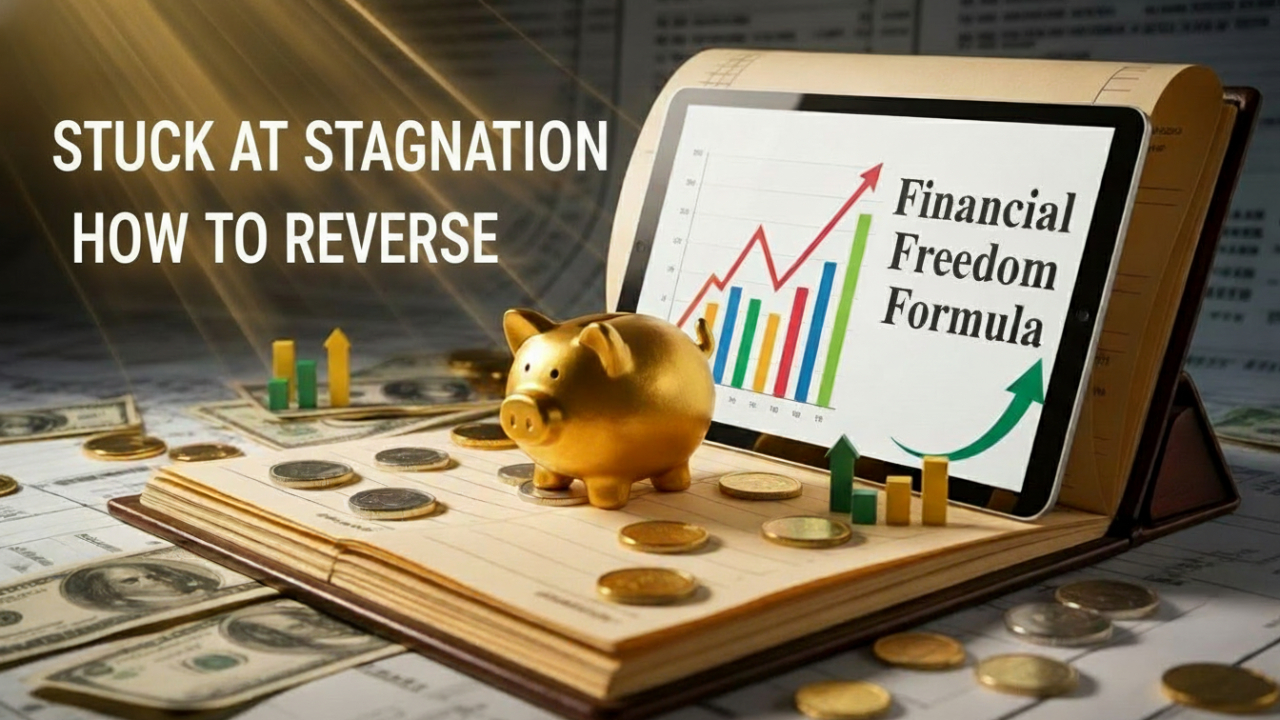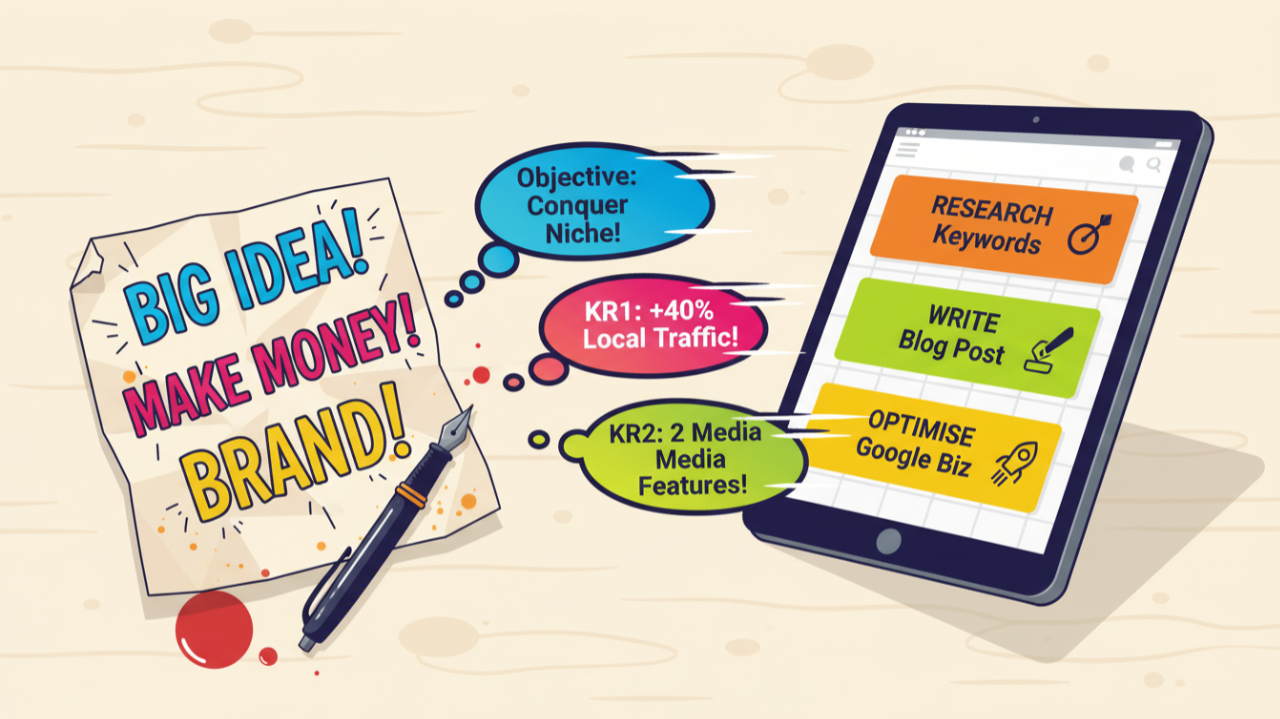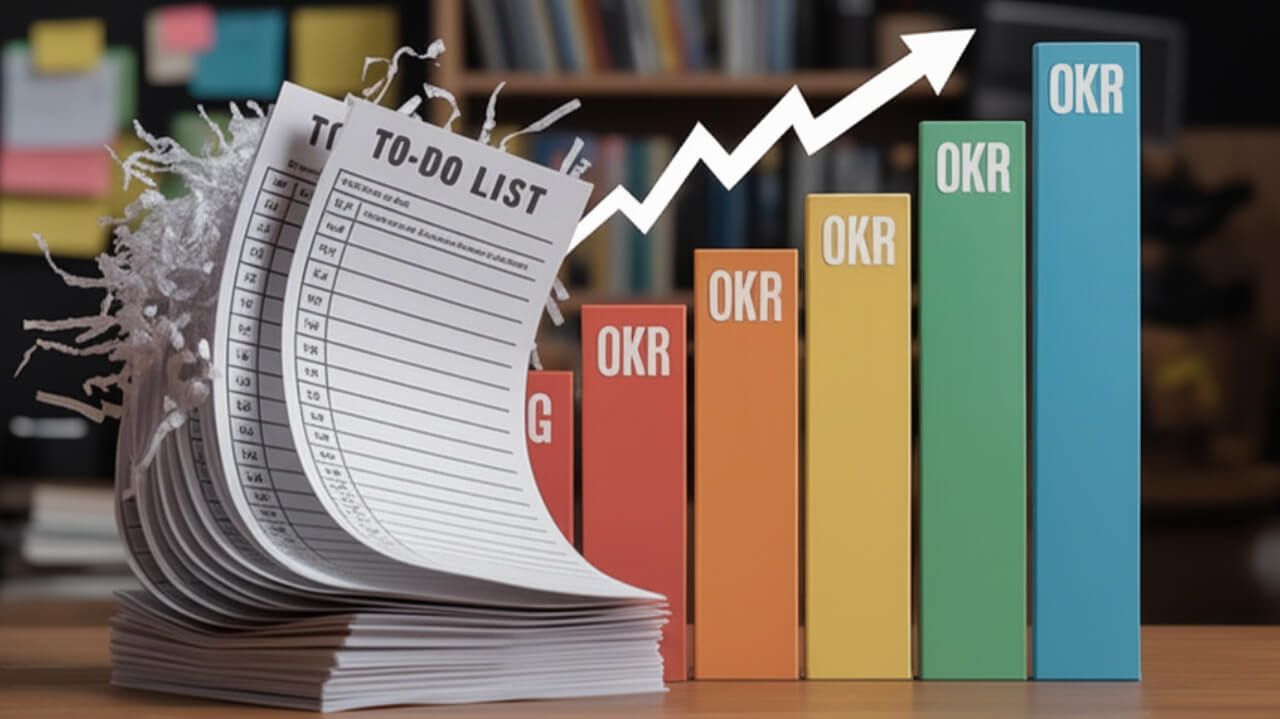How to Choose Your Next Marketing Action with Confidence
The Marketing In-Decision That's Costing You Customers (And How to Fix It)
You know the feeling. You’re sitting there, maybe with a lukewarm cup of tea, staring at a screen filled with possibilities. There’s a list somewhere, either on a Trello board or a crumpled piece of paper, that reads like a marketing textbook index:
- Revamp SEO strategy.
- Launch a new paid social campaign on LinkedIn.
- Create a pillar content piece about [insert industry topic].
- Finally sort out that email nurture sequence.
- Maybe we should be on TikTok?
Each one feels important. Each one could, potentially, be the thing that unlocks the next level of growth. But you have a finite budget, a small team, and only so many hours in the day. So you weigh the options. You read another article. You watch another webinar. And in the end, you do… nothing.
You’re not lazy or indecisive. You’re in a state of strategic freeze. It’s called analysis paralysis, and for small business owners and marketing managers, it’s the silent killer of momentum.
Why We Freeze (The Analysis Paralysis Problem)
At its heart, the "So What?" test is a simple diagnostic tool. It’s a question you ask yourself after you’ve written down a feature or a fact about your business. You state the feature, and then you challenge it, like a slightly sceptical toddler, with a firm “So what?”
Let’s use that terrible example from before:
- Your statement: “Our new widget has a poly-carbon frame.”
- You ask: “So what?”
- Your answer: “Well, it means it’s more durable and less likely to break.”
- You ask again: “So what?”
- Your answer: “So you won’t have to waste money replacing it every six months.”
- And one more time: “So what?”
- Your final answer: “So you can buy it with confidence, knowing it’s a smart investment that will last, saving you hassle and money in the long run.”
Now, look at that final answer. Compare it to the original statement. We went from a cold, technical detail (“poly-carbon frame”) to a warm, emotional benefit (“buy with confidence,” “smart investment,” “saving you hassle and money”). That’s the magic of this test.
This technique isn’t new; it’s been a cornerstone of good copywriting for decades. It forces you to get out of your own head—the head of the business owner who knows every nut and bolt—and into the head of your customer. Your customer doesn’t care about the materials science behind your product. They care about whether it will solve their problem, make their life easier, or make them feel good. The "So What?" test is the bridge between your world and theirs.
Part I: Building the Foundation (Before You Prioritise)
Before we can even think about scoring our ideas, we need to get our house in order. You can’t prioritise a to-do list if you don’t know what you’re ultimately trying to achieve. It’s like trying to pack for a holiday without knowing if you’re going to Iceland or Ibiza. You need a destination, a budget, and a realistic sense of what you can carry.
Define the Mission: Goals and Constraints
First things first, what is the single most important thing you need your marketing to do right now? This is your North Star. Without it, every channel looks equally appealing. Your primary goal could be:
- High Volume Lead Generation: You need to fill the top of your sales funnel with as many qualified names and email addresses as possible.
- Brand Awareness: You’re new or entering a new market, and your main job is to make sure people know you exist.
- Immediate Conversion: You need sales, sign-ups, or demo requests. The goal is to drive action from people who are already problem aware.
Be brutally honest here. You can’t chase all three with equal intensity at the same time, especially with a small business budget. Pick one. Write it down. This is the lens through which you will view every potential marketing action.
Next, quantify your constraints. Your budget isn't just a number; it's a boundary that defines the realm of the possible. A £50,000 annual budget allows for very different activities than a £5,000 one. This isn't about limiting your ambition; it's about focusing it.
Finally, do a quick sanity check on your audience and competitors. Where do the people you want to reach actually spend their time online? If you're selling high-value consultancy services to finance directors, spending your limited budget on a TikTok dance challenge is probably not the best use of resources. Tools like Semrush or even just some focused LinkedIn snooping can tell you where your audience is active and what your competitors are doing. This simple step can often eliminate half of your potential channels before you even start.
Internal Reality Check: The Capability Audit
Here’s something we all do: we underestimate how hard things are. I call it the Effort Blind Spot. We see a beautiful, complex piece of content from a competitor and think, "We should do that." We conveniently forget it probably took a team of three people two months to produce.
This is why an internal capability audit is so important. It’s not a formal HR exercise; it’s a quick, honest conversation with yourself and your team. Ask these two questions for any potential marketing channel on your list:
- Do we have the skills? Do we genuinely have someone who understands the technical nuances of SEO, or the complex bidding strategies of Google Ads? Or are we just planning to "give it a go"?
- Do we have the capacity? Even with the right skills, does the team have the actual time to dedicate to this, on top of everything else they’re doing?
If the answer to either of these is "no," the cost and risk of pursuing that channel just shot through the roof. It means you’ll either have to hire someone, train someone, or accept a much lower quality outcome. Acknowledging this upfront is crucial.
Mapping Channels to the Customer Journey
The final piece of foundational work is to remember that not all marketing channels do the same job. Some are for grabbing attention, others are for building trust, and some are for closing the deal. Thinking about this in terms of a simple customer journey or funnel can bring a lot of clarity.
- Awareness (Top of Funnel): This is about getting on people's radar. Think social media content, PR, display ads, SEO content that answers broad questions. The goal here isn't direct sales.
- Consideration (Middle of Funnel): Now they know you exist, you need to show them why you're the right choice. This is where detailed blog posts, case studies, webinars, and email nurture sequences come in.
- Conversion (Bottom of Funnel): This is the pointy end. You’re asking for the sale or the sign-up. Think Google Ads targeting high intent keywords, retargeting campaigns, and clear calls to action on your website.
- Loyalty (Post Funnel): Keeping existing customers happy. Think customer newsletters, community building, and special offers.
Why does this matter? Because you need to measure each channel against the right Key Performance Indicator (KPI). You wouldn't judge a billboard on the M25 by how many direct sales it generated that day. You'd judge it on reach and impressions. Likewise, you wouldn't judge a bottom of funnel Google Ad on brand awareness. You judge it on its Cost Per Acquisition (CPA) or Conversion Rate. Defining these KPIs upfront stops you from comparing apples to oranges.
Part II: The Solution Framework: RICE Scoring
Okay, foundation built. You have a clear goal, you know your limits, and you understand the roles of different channels. Now, how do you decide what to do first?
This is where we introduce a simple but powerful framework used by product managers at some of the world's smartest companies. It’s called RICE, and it’s the engine that will turn your long list of subjective ideas into a single, prioritised score.
The formula looks like this:
(Reach x Impact x Confidence) / Effort = RICE Score
Let's break down what each of those terms actually means in a marketing context.
Quantifying Each RICE Factor
This is where the magic happens. We’re going to assign a number to each of these four factors for every marketing idea on your list.
R is for Reach: How many people will this action affect in a defined period (e.g., per month or per quarter)? Use real data, not vague guesses.
I is for Impact: How much will this action contribute to your primary goal? Score this on a simple scale:
- 4 = Massive impact
- 3 = High impact
- 2 = Medium impact
- 1 = Low impact
- 0.5 = Minimal impact
C is for Confidence: Confidence reflects how certain you are about your Reach and Impact estimates. Be honest:
- 90-100%: Hard data backs your estimates.
- 70-80%: Some supporting data or competitor analysis.
- 50%: Pure hunch, no real data.
E is for Effort: Effort is the total cost in terms of time and resources, measured in "Person Months" (PM). Be ruthless in estimating this.
Part III: Decisive Action and Portfolio Management
Once you’ve scored each of your marketing ideas using RICE, you’ll have a ranked list. The idea with the highest score is, objectively, your best next move.
Worked Example: RICE in Action
Imagine your goal is immediate new user sign-ups (Conversion). You’re deciding between two ideas:
Idea A: New SEO Pillar Content
- Reach: Target keyword search volume = 10,000.
- Impact: Medium impact on immediate sign-ups = 2.
- Confidence: Competitive keyword, uncertain = 50% (0.5).
- Effort: Extensive work = 3 PM.
RICE Score: (10,000 x 2 x 0.5) / 3 = 3,333
Idea B: High Intent Retargeting Paid Ads
- Reach: Retargeting pool = 2,000.
- Impact: High impact on sign-ups = 4.
- Confidence: Strong test data = 90% (0.9).
- Effort: Quick setup = 0.25 PM.
RICE Score: (2,000 x 4 x 0.9) / 0.25 = 28,800
The result is clear. The paid ad campaign is the "best action right now" due to its high impact, high confidence, and low effort.
Strategic Portfolio Balancing
RICE is a tool for deciding what to do next, not what to do forever. Balance your portfolio:
- Always On (70%): Low-risk, short payback activities.
- Long Term Investments (30%): Big bets like SEO or brand building.
The Continuous Confidence Loop
Once you act, you gain real-world data. Success breeds confidence, and confidence leads to better decisions. Over time, your RICE scores become more accurate, creating a virtuous cycle that crushes analysis paralysis.
Conclusion: Act with Data, Not Doubt
Analysis paralysis thrives on ambiguity and fear. Beating it isn’t about finding a silver bullet. It’s about implementing a consistent, objective system that forces clarity and prioritisation. The RICE framework provides that system, translating your goals, constraints, and ideas into actionable scores.
So, stop analysing and start scoring. Take that messy list of marketing ideas, run them through the RICE framework, and commit to acting on whatever comes out on top.
And if you need a hand building that first scorecard and getting your team aligned on a clear path forward, that's precisely what our Pathfinder SPRINT Workshop is designed for. The best time to make your next marketing move was yesterday. The second-best time is now.
In adopting this framework, you’ll not only overcome analysis paralysis but also create a culture of decisive, data-driven action that propels your marketing forward. Remember, momentum is more valuable than perfection. With the RICE framework, you’ll have the clarity to act decisively and the confidence to know you’re making the right moves for your business. And as you refine your process, you’ll find that the fear of making the wrong choice fades, replaced by the satisfaction of consistent progress.
Additional Resources:
For further material on related topics, consider exploring the following:
- Stop Drowning in Marketing Advice: Break the Endless Research Loop That's Keeping You Stuck
- Insider's Guide to Crafting the Perfect Customer Persona
- Crack the Marketing Code: The Power of 20 Strategic Questions
- The Copywriting Secret That Turns Technical Specs Into Emotional Gold
- 90 Day Action Plan Template: The Proven Strategy for Achieving Your Business Goals
Reclaim your momentum, energy, and confidence.
Contact us
now and let’s turn your business strategy into unstoppable progress.
Phone: 0330 311 2820
We look forward to helping you discover your unique path to growth, strategies that fit you - not the other way round.
Pay It Forward! Sharing Is Caring!



